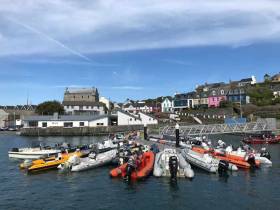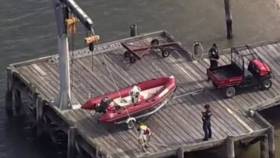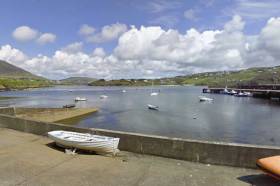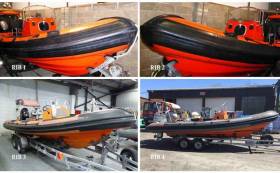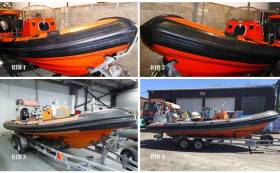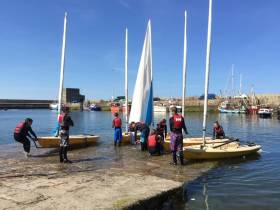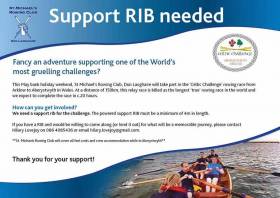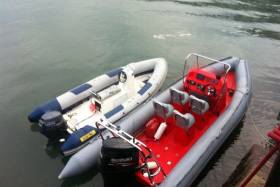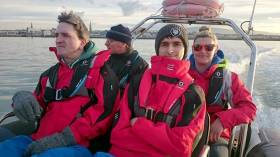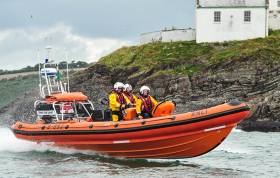Displaying items by tag: Rib
We're Gonna Need a Bigger Pontoon at Baltimore Harbour!
Baltimore Harbour's new landing pontoon and gangway to aid boating visitors and aquatic tourism are proving very popular as our photos by Michael Chester from the West Cork Harbour reveal.
RIBS have proliferated like chickweed around the coast over the last decade or so but finding a handy place to moor up is often a problem, not only in West Cork.
Baltimore's new handy facility makes it easier and safer to get afloat and moor boats overnight without the hassle of having to moor on a swinging mooring or retrieve boats from the water.
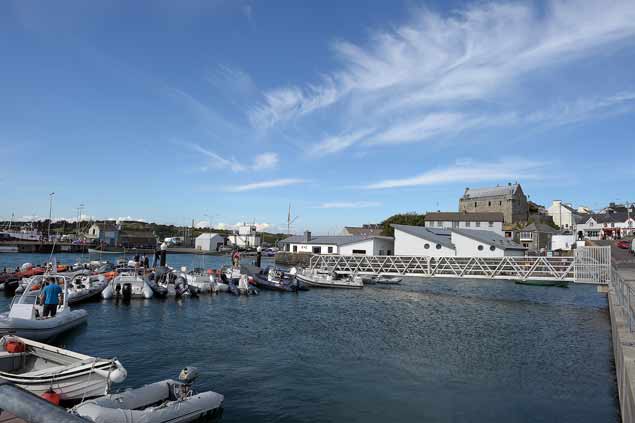 The landing pontoon and gangway at Baltimore Harbour conveniently located close to the Sailing Club Photo: Michael Chester
The landing pontoon and gangway at Baltimore Harbour conveniently located close to the Sailing Club Photo: Michael Chester
But it wasn't always that easy. As Afloat.ie reported back in 2013, all that previously existed in Baltimore was a temporary floating pontoon for visiting boats present only in the summer season. That pontoon was capable of taking for up to seven or eight boats and was used by a mix of cruising boats, ribs and local fishing boats, often rafting up in busy periods.
In February 2015, a new landing pontoon and gangway to aid boating visitors and aquatic tourism were installed.
Nearby, there are now also new facilities at Cape Clear Island and works at Schull Harbour will further extend the cruising range for RIBs and pleasure boats to explore the boating wonders of the West Cork coast.
Build it and they will come!
RIB Death in America - Propellors Are Lethal Weapons
We know that RIB crews and Instructors in our Junior Sailing Programmes are given the most rigorous training in safety writes W M Nixon. Yet over the years who hasn’t occasionally seen an outboard-driven RIB being treated as though it’s a toy, designed for playing harmless nautical chicken? But in reality any propellor – and an outboard propeller in particular – is probably the most lethal weapon with which you could possibly share the sea, even when it is being used responsibly with the best intentions.
So a report here in American Scuttlebutt will strike a chill in the hearts and minds of all thinking sailors. Put simply, a ten year old boy sailing pupil has been killed by an instructor’s RIB while taking part in a capsizing exercise. The story is here. It may have happened in America. But it is always lurking, ready to happen anywhere.
RIB Accident Claims Two Lives in Donegal
The Coast Guard has recovered the bodies of two men from the water in Co Donegal yesterday. One man was in his 50s and the other man was in his 40s.
The incident occurred off Malinbeg, Glencolmcille, Co Donegal.
Whilst on exercise to Mullaghmore yesterday morning, the volunteer crew of the Bundoran RNLI Lifeboat responded to a pan-pan emergency call from Malin Head Coast Guard at 11.40am. A five metre RIB had been found at Malin Beg near Glencolmcille, County Donegal and one person was missing.
At around 12:15pm, the Bundoran Lifeboat began a shore search from Teelin towards Malin Beg Head. The Sligo based Rescue 118 helicopter was on scene at Malin Beg Head with the all-weather lifeboat from Arranmore also requested to launch. A shore crew from the Killybegs Coast Guard unit was also tasked.
Following notification from Rescue 118 that a casualty had been spotted in the water at Malin Mor, the lifeboat crew made their way to the scene and recovered a casualty just before 1pm.
The casualty was brought to Teelin Pier and transferred into the care of the emergency services where he was pronounced dead by a local doctor.
Buoyant Prices Achieved at Kinsale RIB Auction
Dominic Daly auctioneer achieved good prices at the public auction of six RIBs at Kinsale Boat Yard, Co. Cork on Tuesday, 23rd May, 2017.
Daly told Afloat.ie the XS RIBs sold for €30,000 and €28000. The Redbay RIBs 6.5m sold for €14,000 13,500 and €8,700.
A Jet ski sold for €2000.
Details of the boats are here
Dominic Daly Auctioneer – in association with Promara Ltd – Noel O Regan will auction six RIBs and a jet ski (details below) at Kinsale Boat Yard, Co. Cork at 12 noon on Tuesday, 23rd May, 2017.
For further details, please contact: Dominic Daly 087 2550486 [email protected] and Noel O Regan 087 3435666 [email protected]
Scroll down for specs and more photos of each RIB
VENDORS: SFPA (Sea Fisheries Protection Authority)
RIB 1 Maker XS RIBS Model 7.0m
Built 2010 Length 7.0m
Beam 2.6m Engines 2 Yamaha 100 HP 4-stroke
Console Patrol with 4 jockey seats Road trailer 4 wheel road trailer
Fuel tanks 2 tanks fitted under decks Storage Storage box aft
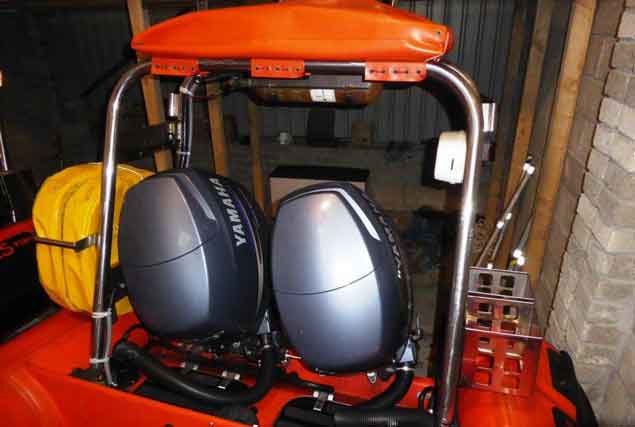
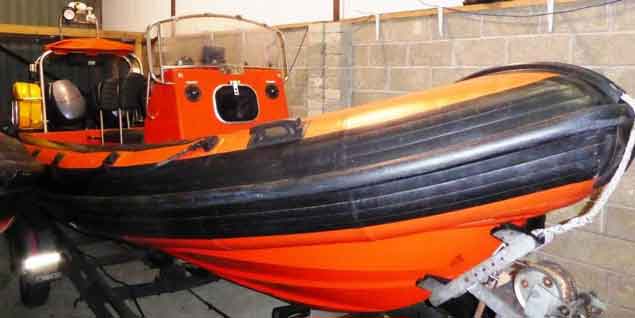
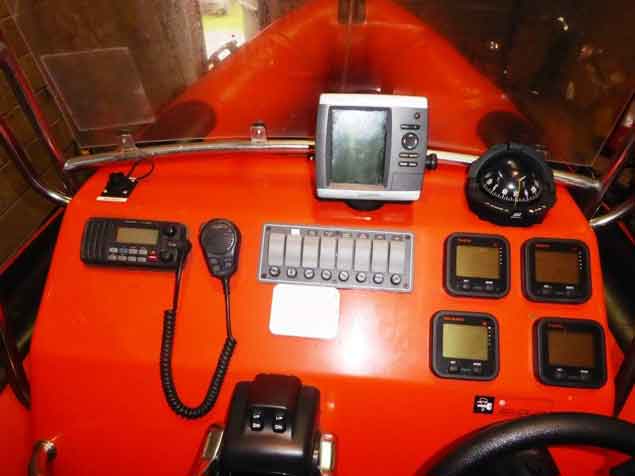
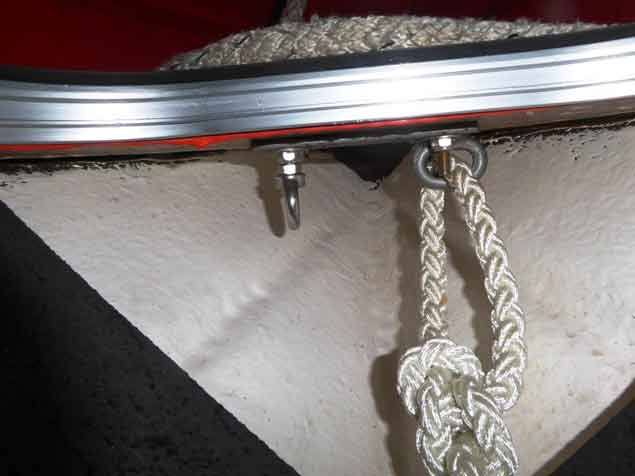
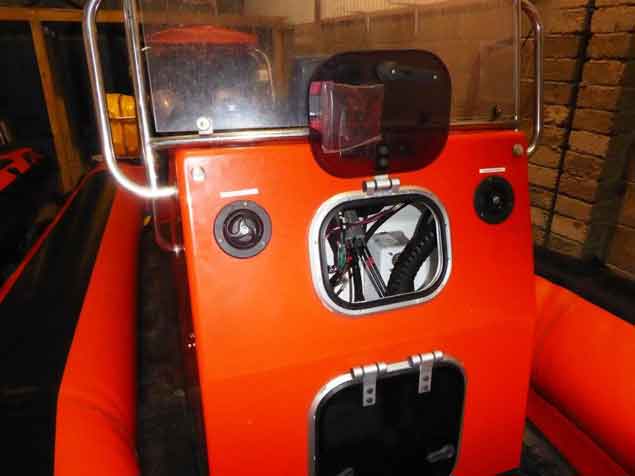
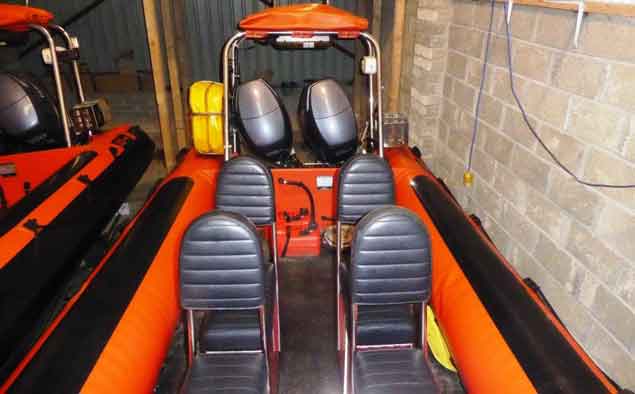
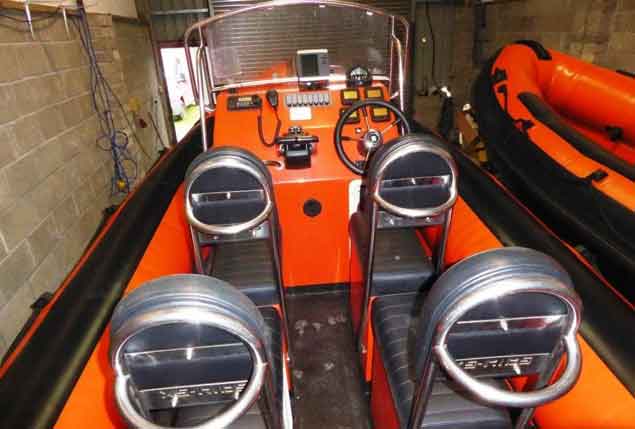 Above: photos of RIB 1 Maker: XS RIBS Model : 7.0m
Above: photos of RIB 1 Maker: XS RIBS Model : 7.0m
RIB 2 Maker XS RIBS Model 7.0m
Built 2010 Length 7.0m
Beam 2.6m Engines 2 Yamaha 100 HP 4-stroke
Consol Patrol with 4 jockey seats Road trailer 4 when road trailer
Fuel tank 2 tanks fitted under decks Storage Storage box aft
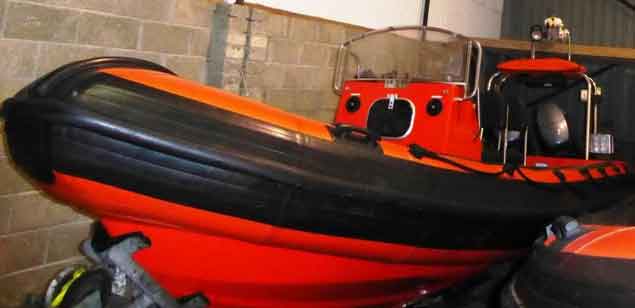
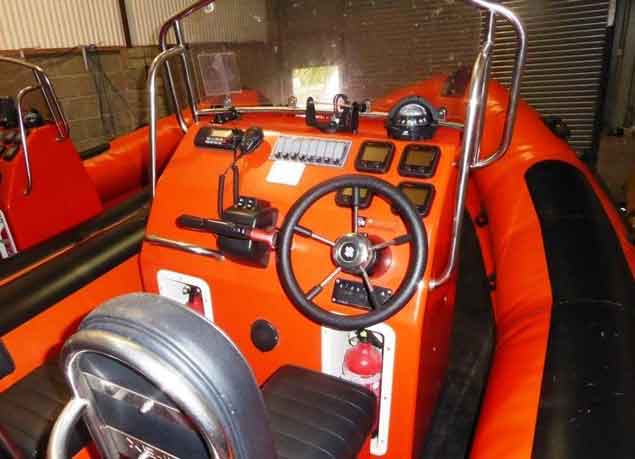
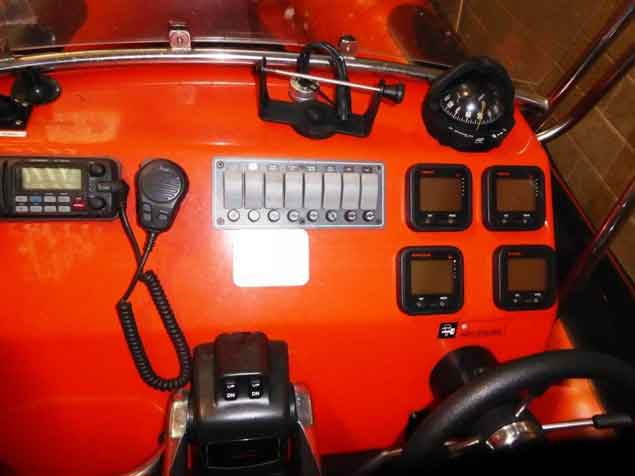
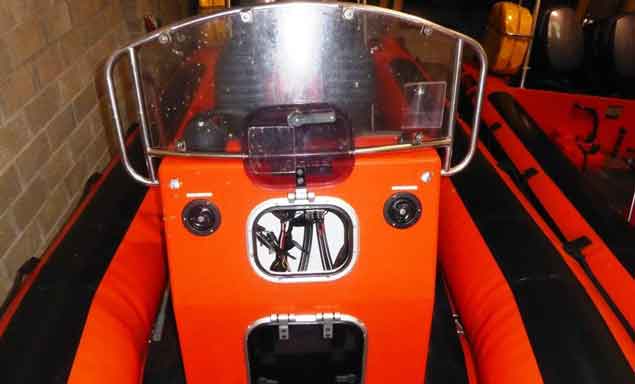
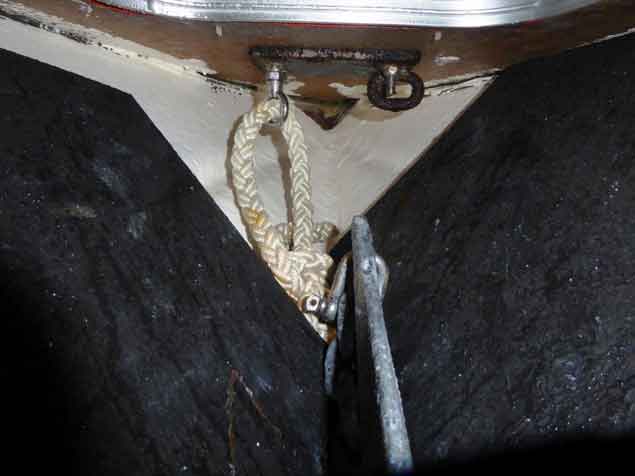
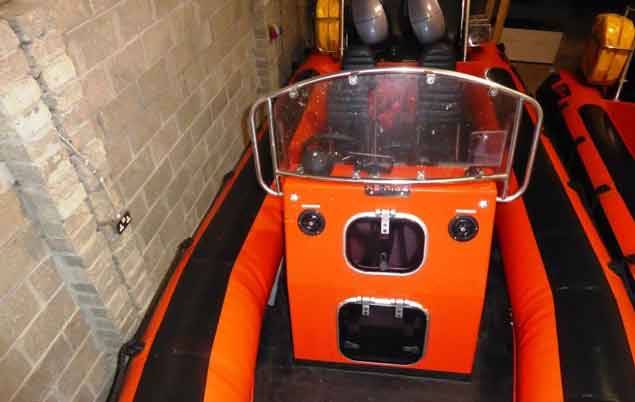
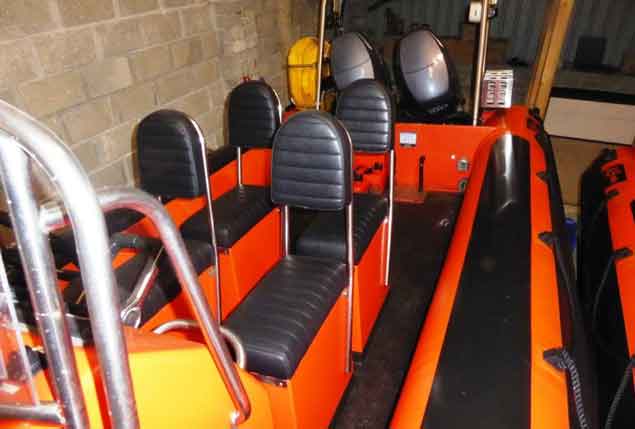
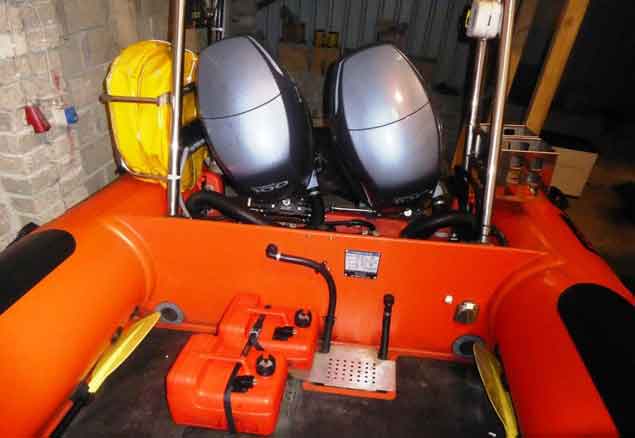 Above: Photos of RIB 2 Maker: XS RIBS Model: 7.0m
Above: Photos of RIB 2 Maker: XS RIBS Model: 7.0m
VENDORS: IFI (Inland Fisheries Ireland)
RIB 3 Maker Redbay Model Stormforce 6.5
Built 2000 Length 6.5m
Fuel tanks 2 tanks fitted above decks Storage Storage box aft
Console Single 4 jockey seats Engines 2 Suzuki 90 HP 4-stroke
Road trailer 4 wheel road trailer
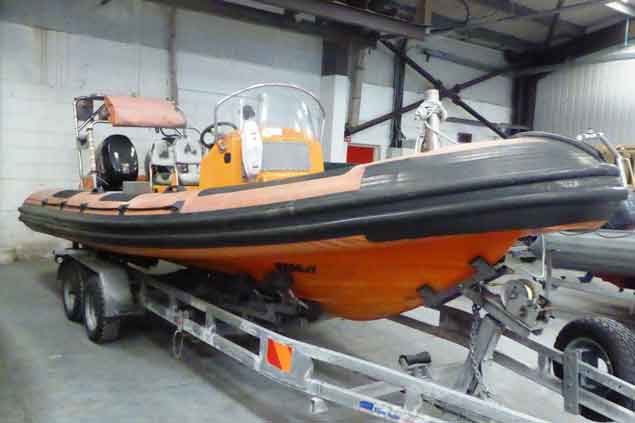
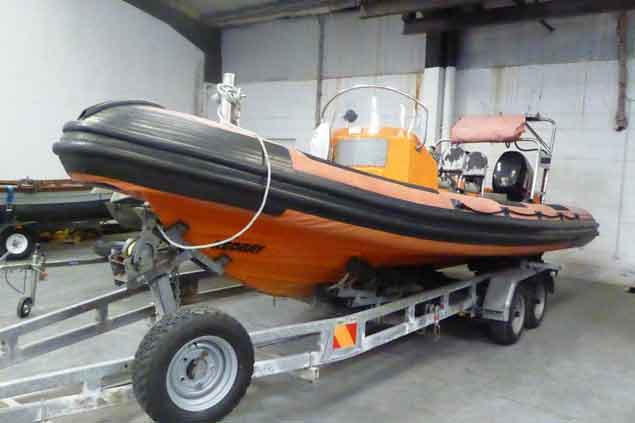
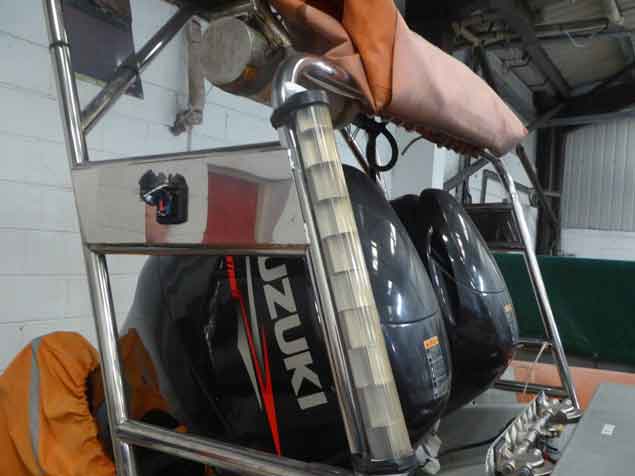
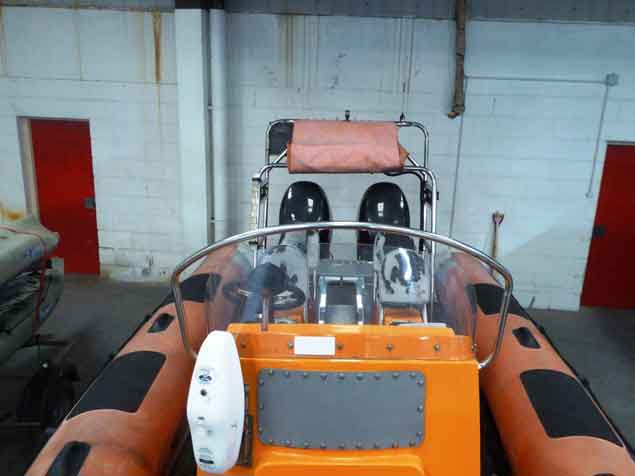
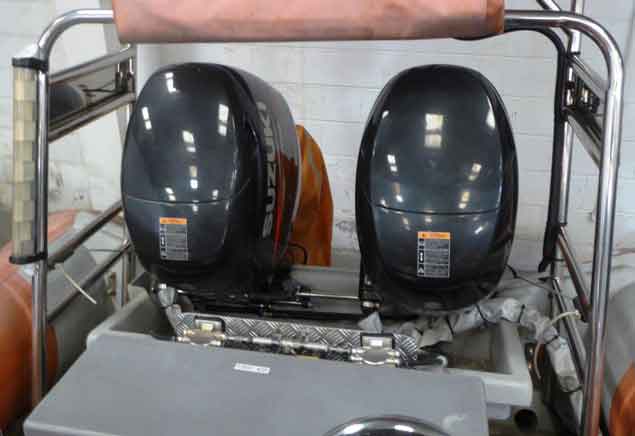
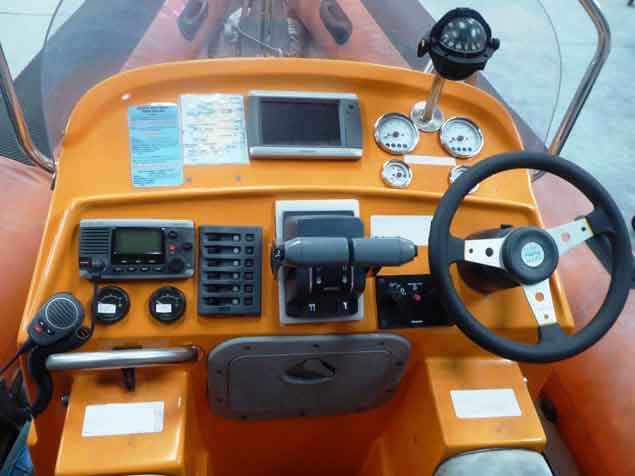
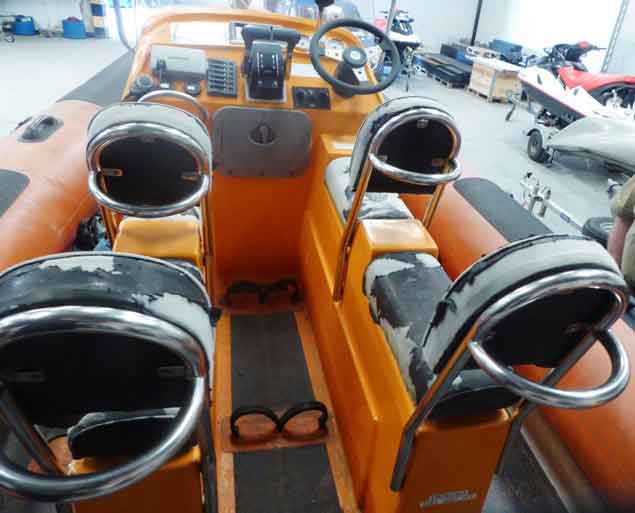 Above: photos of RIB 3 Maker: Redbay Model: Stormforce 6.5
Above: photos of RIB 3 Maker: Redbay Model: Stormforce 6.5
RIB4 Maker Redbay Model Stormforce 6.5
Built 2000 (or earlier) Length 6.5m
Console Single 4 jockey seats Engines 2 Honda 90 HP 4-stroke
Road Trailer
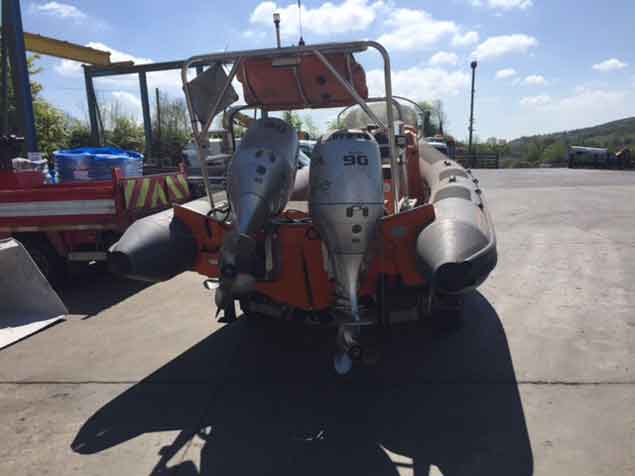
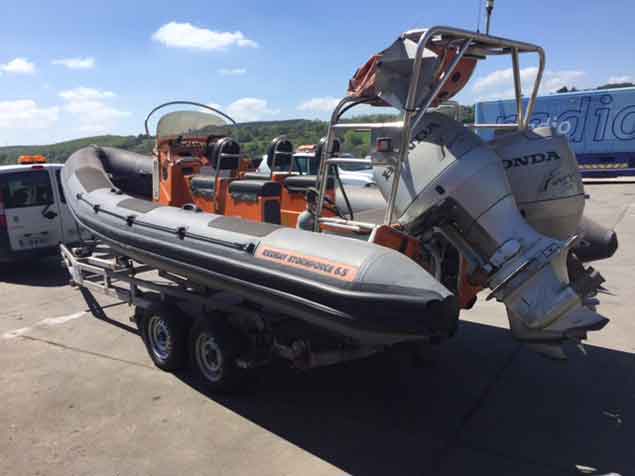
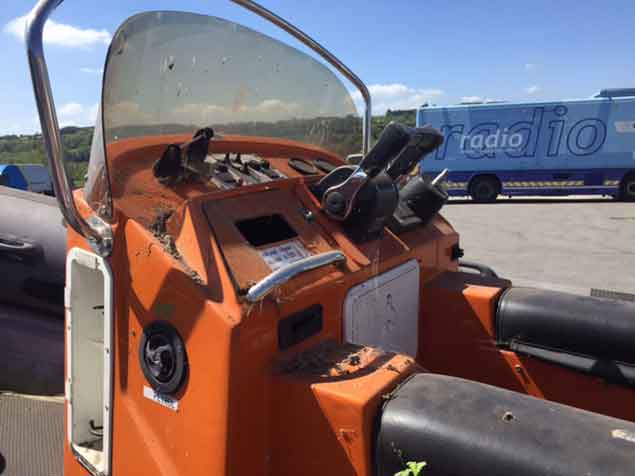
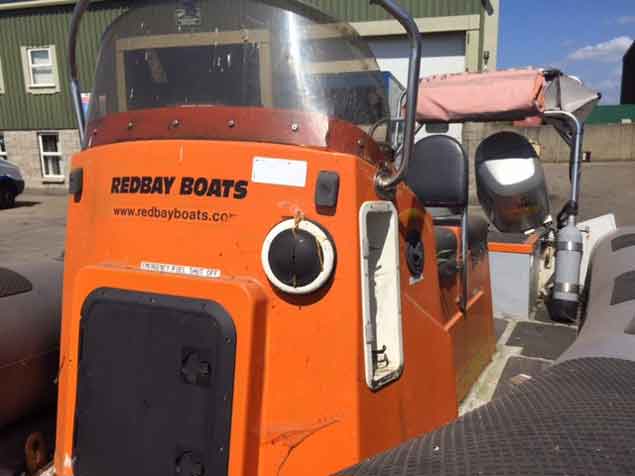
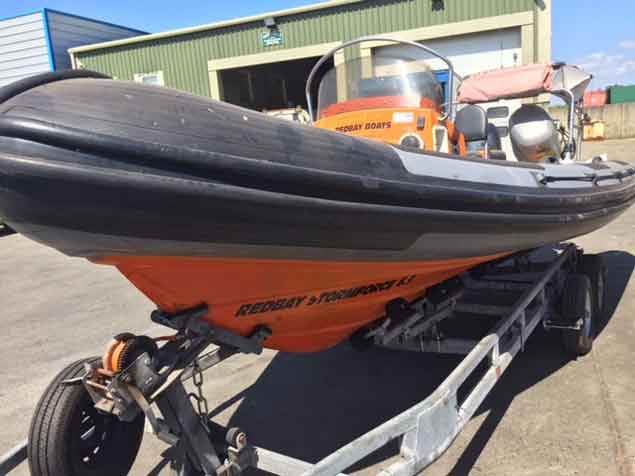
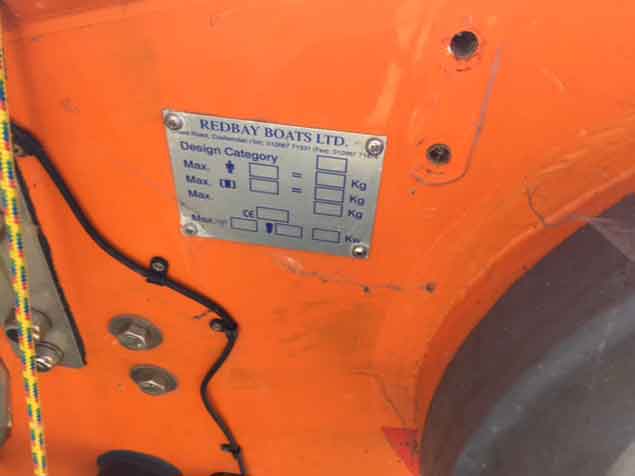
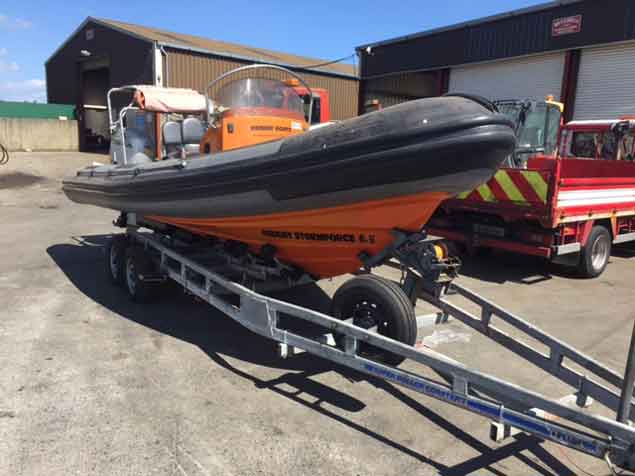
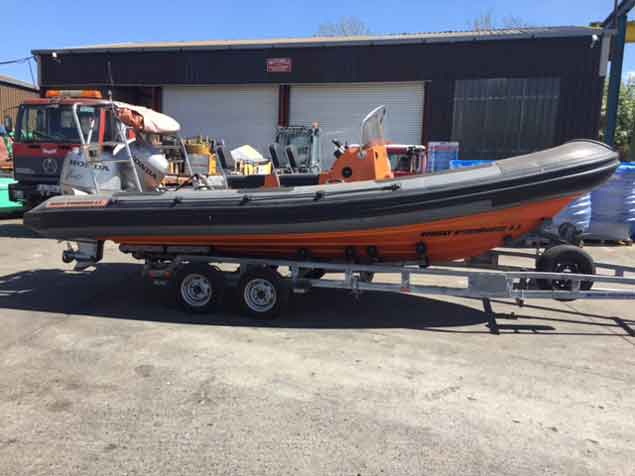 Above: Photos of RIB4 Maker: Redbay Model:Stormforce 6.5
Above: Photos of RIB4 Maker: Redbay Model:Stormforce 6.5
RIB 5
Make RIB350 Rigid Inflatable
Built 2006
Engines Yamaha 25 hp electric & manual start
Engine detail model 25NEO
Console Single seat behind console
Fuel tanks Portable tanks
Road Trailer two wheel trailer
Equipment paddles, cover, fish finder, air pump

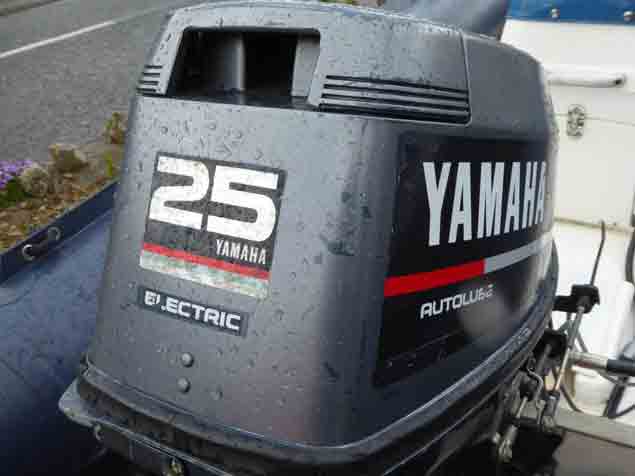
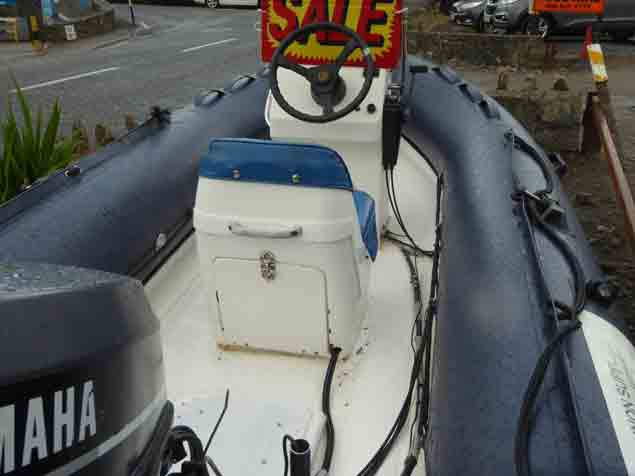
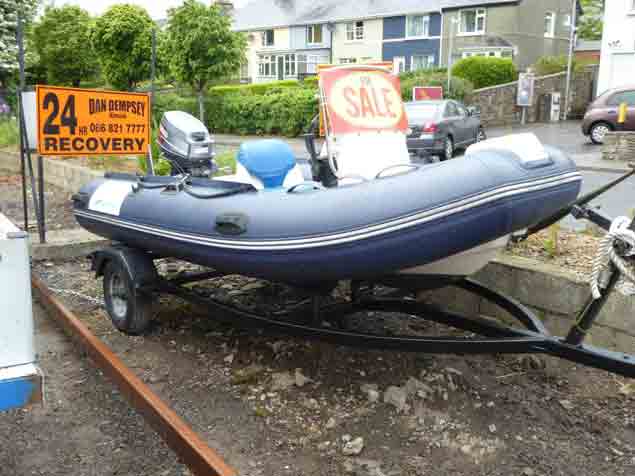
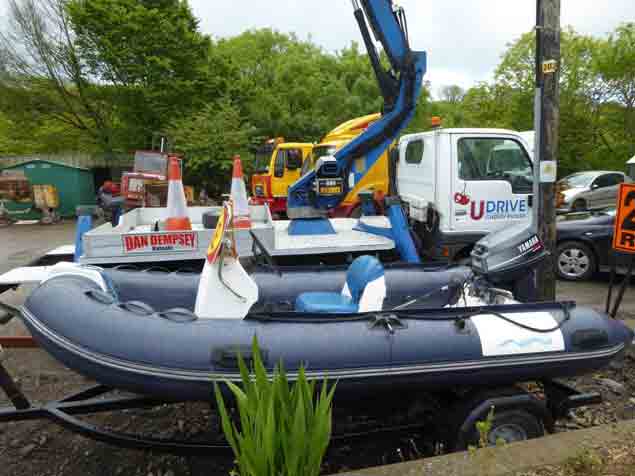
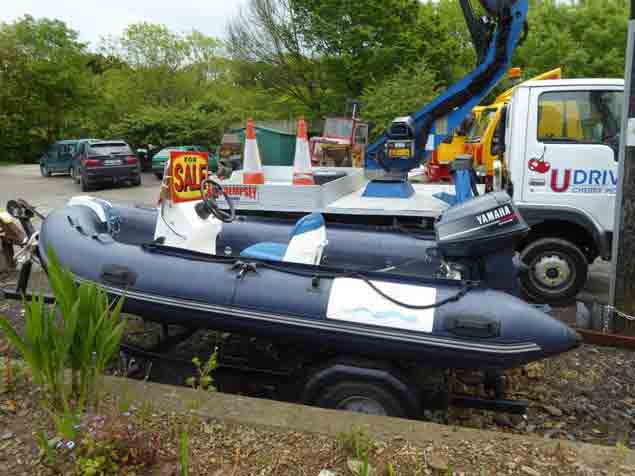
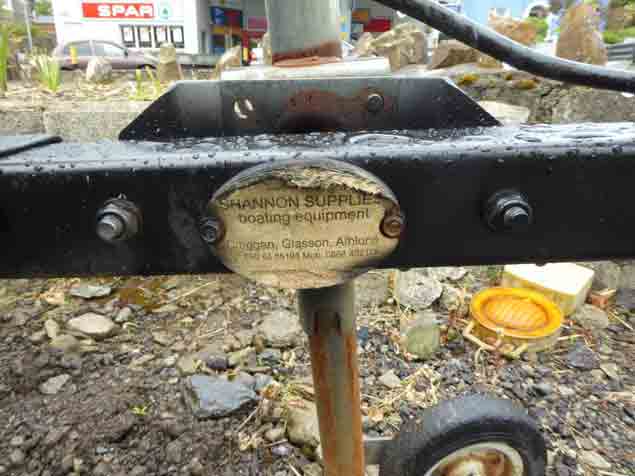
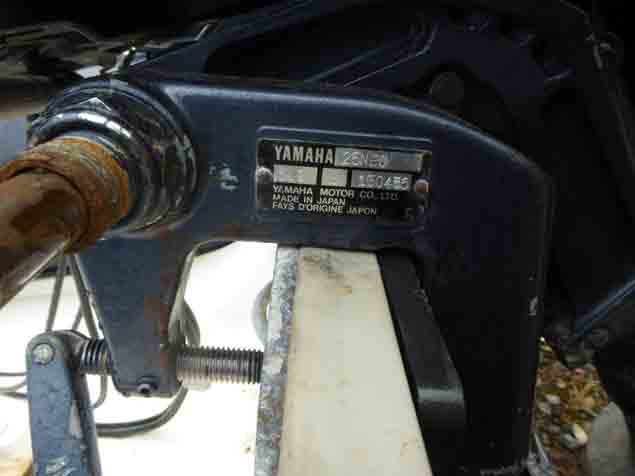
RIB 6
Maker Redbay
Model 6.5
Built 2001
Road trailer trailer
Engines 2 Evinrude 90HP
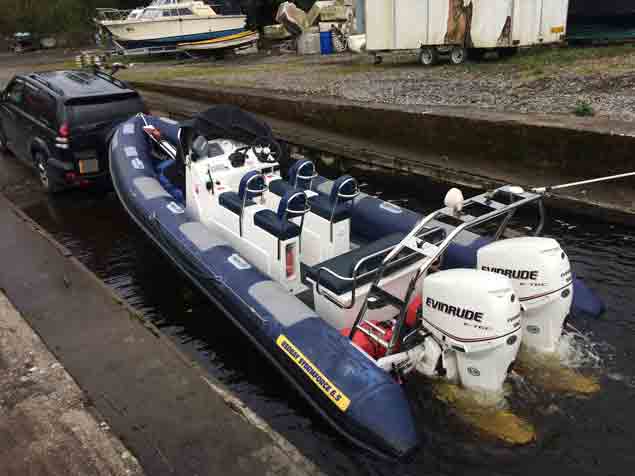
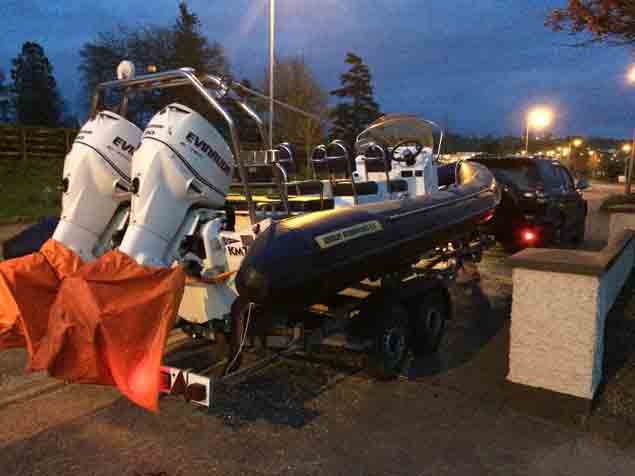
Jet Ski
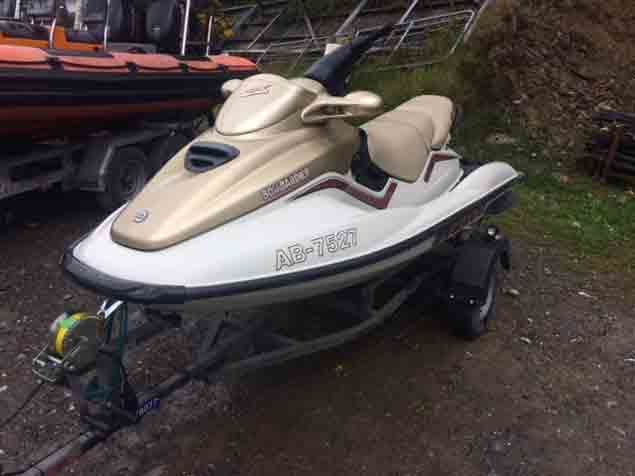
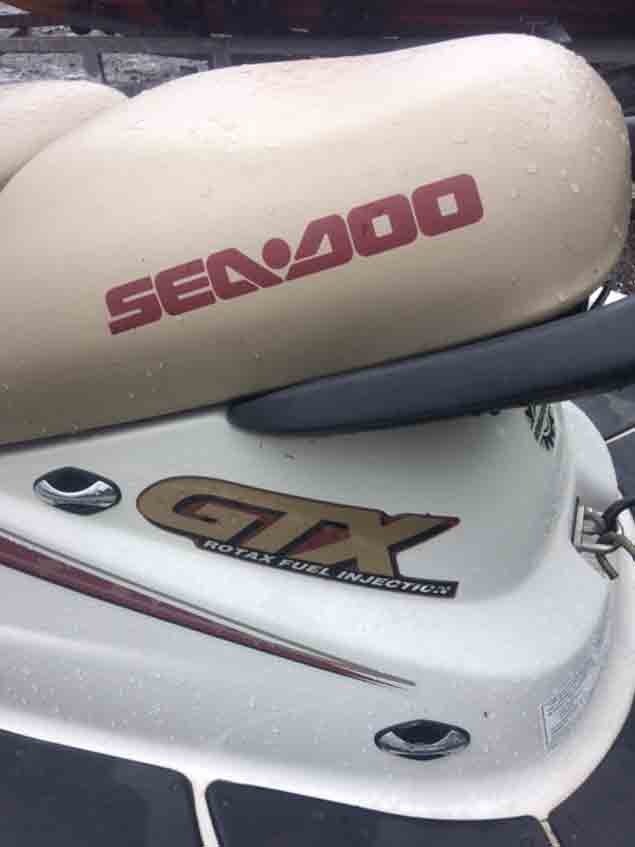
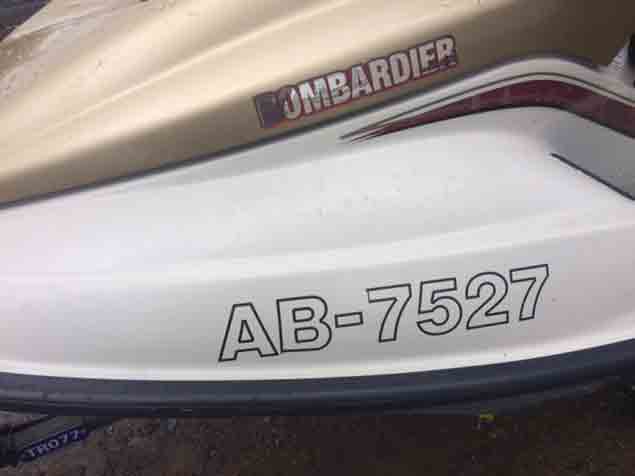
For further details, please contact: Dominic Daly 087 2550486 [email protected] and Noel O Regan 087 3435666 [email protected]

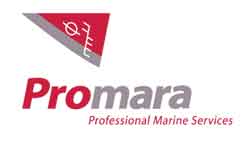
Dominic J. Daly & Co. FRICS, MSCSI
CHARTERED SURVEYORS & VALUERS
Pembroke House Tel: 021 – 4277399
Pembroke Street Mobile: 087 – 2550486
Cork. Email: [email protected]
#Crime - A sail training boat owned by the Irish Youth Sailing Club is among those vandalised in an incident at Dun Laoghaire’s West Pier over the weekend, as TheJournal.ie reports.
The RIB, which was slashed and had its outboard engine removed, was one of three vessels damaged in the attack, the aftermath of which was discovered on Sunday morning (7 May).
Also affected were the Dun Laoghaire Sea Scouts, who lost an engine to theft, while a third engine was stolen from a yacht in the nearby inner harbour — the latest incident in what’s being described as a rise in thefts and vandalism in the area.
Kyron O’Gorman of the IYSC says a replacement training RIB could set the club back at least €7,000.
TheJournal.ie has more on the story HERE.
RIB Needed For Charity Irish Sea Coastal Rowing Race
Dun Laoghaire's St Michael's Rowing Club is participating in a Charity Irish Sea fundraising race for the RNLI over the May Bank holiday but one of its support RIBs has pulled-out. The club has put a shot-out for a replacement to Afloat.ie readers.
The RIB must be over 5.5 metres in length.
The club says it will cover associated fuel and crew costs. Full details in the poster above that is also downloadable below in a larger format.
Motorboat Hire: Rent a RIB on Dublin Bay
Ever wanted to rent a Rigid Inflatable Boat (RIB) for a blast on Dublin Bay? Here's your chance. The Irish National Sailing School's 4.5m RIBTECs fitted with Yamaha 40hp engines are ideal for trips around the capital's waters. Included in the price of a three hour charter at €115 is a full tank of fuel.
The operating area for these boats is Dublin Bay, south of the shipping lane and as far East as Dalkey Island. The minimum qualification required to rent the boat is a National Powerboat Certificate (Level 2).
For more details on the offer check out the listing on Afloat's Marketplace here.
Spinal Injuries Ireland Seeks Support For Charity Work; Including RIB Trips on Dublin Bay
As part of its annual fundraising campaign, Spinal Injuries Ireland is seeking support from the sailing and boating community on its 'Colour me Friday' campaign day today.
Spinal Injuries Ireland is the only support service for people who have sustained a spinal injury and it provides a pathway of services for patients and their families from onset of injury to inclusion in their local community.
One of these successful pathways is SPII's 'Active Me' programme, an actvity that brings patients out on the SPII RIB on Dublin Bay.
SII relies on fundraising for 61% of its income. To contribute towards the campaign text CORD to 50300 to donate €4 to SII.

RIB Hits Cork Harbour Navigation Buoy, Crosshaven RNLI Lifeboat Assists Casualty At City Marina
Crosshaven RNLI lifeboat in Cork Harbour was requested to launch yesterday evening at 8.49pm after a report of a 9m RIB (Rigid Inflatable Boat) with two people on board hit a navigation Buoy near Tivoli in Cork City.
Reports also were given that one person was injured.
The volunteer crew made best safe speed on the 20 minute journey to the City. New information received en route stated the damaged RIB had managed to journey under its own power to Cork City marina, but was still requesting first aid help.
On arrival at the City Marina, the RNLI crew assessed the casualty who was complaining of chest injuries and administered first aid until the emergency ambulance arrived and conveyed the casualty to hospital.
The lifeboat then escorted the damaged RIB on its return journey to Crosshaven and assisted in putting the vessel alongside
The lifeboat arrived back at the station in Crosshaven at 10.50pm, where it was refueled, washed down and declared ready for service once more at 11.30pm


























